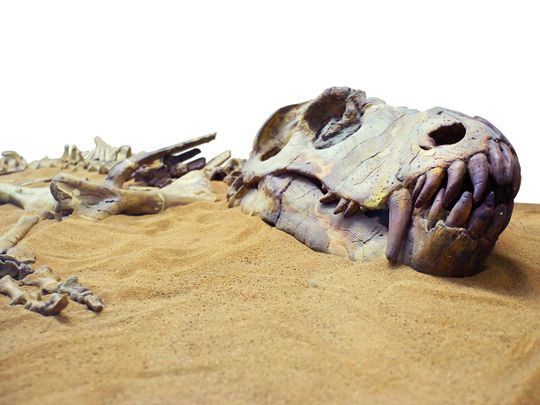
PARIS: Whether humanity has pushed the planet into a “mass extinction” event may be a matter of definition, but by any measure the rate at which life-forms are disappearing is deeply alarming, scientists say.
“In each of the five previous mass extinctions, we lost about 75 per cent of species,” said Robert Watson, head of the UN science panel on biodiversity, which unveiled a grim assessment of the state of Nature on Monday.
Over the last several centuries Earth has lost about two per cent, and so — by that criterion — remains far below the threshold, he told AFP.
But if one looks instead at the rate at which species are dying off, the picture becomes bleaker.
Currently the pace of extinctions is up to several hundred times greater than the average over the last ten million years, the new report concluded. At that rate, we could hit the 75 per cent mark within a couple of hundred years.
Here are Earth’s biggest die-offs over the last half-billion years, each showing up in the fossil record at the boundary between geological periods.
Ordovician extinction:
When: about 445 million years ago
Species lost: 60-70 per cent
Likely cause: Short but intense ice age
Most life at this time was in the oceans. It is thought that the rapid, planet-wide formation of glaciers froze much of the world’s water, causing sea levels to fall sharply. Marine organisms such as sponges and algae, along with primitive snails, clams, cephalopods and jawless fish called ostracoderms, all suffered as a consequence.
Devonian extinction:
When: about 375-360 million years ago
Species lost: up to 75 per cent
Likely cause: oxygen depletion in the ocean
Again, ocean organisms were hardest hit. Fluctuations in sea level, climate change, and asteroid strikes are all suspects. One theory holds that the massive expansion of plant life on land released compounds that caused oxygen depletion in shallow waters. Armoured, bottom-dwelling marine creatures called trilobites were among the many victims, though some species survived.
Permian extinction:
When: about 252 million years ago
Species lost: 95 per cent
Possible causes: asteroid impact, volcanic activity
The mother of all extinctions, the “Great Dying” devastated ocean and land life alike, and is the only event to have nearly wiped out insects as well. Some scientists say the die-off occurred over millions of years, while others argue it was highly concentrated in a 200,000-year period.
In the sea, trilobites that had survived the last two wipeouts finally succumbed, along with some sharks and bony fishes. On land, massive reptiles known as moschops met their demise. Asteroid impacts, methane release and sea level fluctuations have all been blamed.
Triassic extinction:
When: about 200 million years ago
Species lost: 70-80 per cent
Likely causes: multiple, still debated
The mysterious Triassic die-out eliminated a vast menagerie of large land animals, including most archosaurs, a diverse group that gave rise to dinosaurs, and whose living relatives today are birds and crocodiles. Most big amphibians were also eliminated.
One theory points to massive lava eruptions during the breakup of the super-continent Pangea, which might have released huge amounts of carbon dioxide, causing runaway global warming. Other scientists suspect asteroid strikes are to blame, but matching craters have yet to be found.
Cretaceous extinction:
When: about 66 million years ago
Species lost: 75 per cent
Likely cause: asteroid strike
A space rock impact is suspect No. 1 for the extinction event that wiped out the world’s non-avian dinosaurs, from T-Rex to the three-horned Triceratops. A huge crater off Mexico’s Yucatan Peninsula supports the asteroid hypothesis.
But most mammals, turtles, crocodiles and frogs survived, along with birds as well as most sea life, including sharks, starfish and sea urchins. With dinosaurs out of the way, mammals flourished, eventually giving rise to the species — Homo sapiens — that has sparked fear of the sixth mass extinction.
SOURCES: Peer-reviewed studies, National Geographic, Encyclopaedia Britannica.








